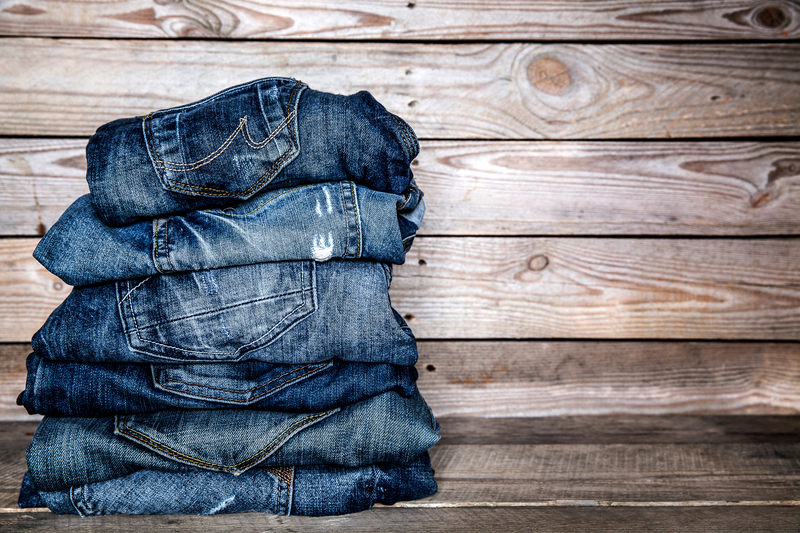Responsible PPE Waste Disposal for Homes and Workplaces
The increased use of Personal Protective Equipment (PPE) such as masks, gloves, face shields, and gowns has become an everyday reality for people across the globe--at home, in offices, and on industrial sites. With this rise comes a significant challenge: responsible PPE waste disposal. Properly managing PPE waste in both domestic and professional settings is crucial for safeguarding public health and protecting our environment.

Understanding PPE Waste: Types and Challenges
PPE (Personal Protective Equipment) encompasses a wide range of items used to protect individuals from hazardous substances, contagious diseases, and physical harms. Typically, PPE includes masks, gloves, gowns, face shields, and shoe covers. Each of these items can present unique disposal challenges, particularly when used in large quantities in the workplace or amid global health crises.
Why Is Proper PPE Waste Disposal Important?
- Health Risks: Improperly disposed PPE can spread infectious diseases and expose waste handlers to pathogens.
- Environmental Impact: Many PPE items are single-use and made of plastic, contributing to long-lasting pollution and harming marine life.
- Regulatory Compliance: Organizations must follow government and local guidelines on infectious waste management.
Common PPE Waste in Homes and Workplaces
Household PPE Waste
- Disposable facemasks
- Single-use gloves (nitrile, latex, vinyl)
- Face shields and goggles
- Disposable aprons or gowns
- Sanitizing wipes and tissues
Workplace PPE Waste
- Respirators and N95 masks
- Protective gear from healthcare and industrial settings
- Contaminated PPE from laboratories or hazardous areas
- Shoe covers, hairnets, and protective clothing
Key Principles of Responsible PPE Waste Disposal
There are several core principles for handling and disposing of PPE waste responsibly, whether at home or in the workplace. Following these best practices reduces the risk of contamination and environmental degradation.
1. Segregation of PPE Waste
- Separate PPE waste from general household or office waste--use a dedicated bin or bag clearly labeled for PPE.
- In workplaces, follow color-coded bin protocols (for example, using red or yellow bags for infectious waste).
- Do not mix PPE with recyclables, as contaminated PPE can compromise recycling streams.
2. Storage and Containment
- Ensure PPE waste containers are leak-proof and have secure lids.
- Use foot-operated bins to minimize hand contact, especially in workplaces.
- Do not overfill PPE waste bags; tie them securely before removal.
3. Safe Collection and Transportation
- Assign designated personnel for PPE waste handling in workplaces.
- Wear gloves and protective gear when removing or transporting PPE waste.
- Wash hands thoroughly after handling PPE waste.
4. Proper Disposal Methods
- Follow local municipal guidelines for disposing of PPE waste.
- In many cases, PPE waste should go to a landfill and not to recycled waste streams.
- For large quantities or contaminated PPE (such as from healthcare settings), engage licensed hazardous waste disposal services.
PPE Waste Disposal at Home: Step-by-Step Guide
Managing PPE waste responsibly at home protects your household and helps keep your community safe. Follow these steps for optimal disposal:
- Designate a PPE Waste Bin: Set up a separate, lined bin in a convenient location. Label it for "PPE Waste Only."
- Bag and Secure: Place all used masks, gloves, and disposable items into a bag. Use a twist tie or knot to secure the bag when full.
- Keep Out of Reach: Ensure children and pets cannot access the PPE waste bin.
- Follow Local Instructions: Check your city or municipality's guidance on PPE waste disposal. Typically, PPE waste can be double-bagged and placed with general trash, but never with recyclables.
- Hand Hygiene: Wash or sanitize your hands thoroughly after handling or disposing of PPE.
Tip: Avoid flushing masks, gloves, or wipes down the toilet--this can cause sewer blockages and pollution!
Workplace Strategies for Effective PPE Waste Management
1. Establish a PPE Waste Management Policy
- Develop a formal policy for PPE waste disposal as part of your organization's health & safety protocol.
- Assign a supervisory team to oversee compliance and provide ongoing training.
2. Implement Color-Coded Bins and Signage
- Set up dedicated bins for PPE waste at strategic locations, such as entry/exit points and near PPE stations.
- Use clear, visible signage to instruct staff and visitors on proper disposal procedures.
3. Engage Professional Waste Disposal Services
- For workplaces generating large volumes or hazardous PPE waste, collaborate with professional, licensed waste management providers.
- Schedule regular collections to avoid accumulation and potential contamination.
4. Train Employees and Raise Awareness
- Provide regular training on PPE use and disposal.
- Educate employees about the environmental and health impacts of improper disposal.
- Encourage a culture of responsibility through visual reminders and leadership engagement.
The Environmental Impact of Incorrect PPE Disposal
Improper disposal of single-use PPE poses a growing threat to our planet. Masks, gloves, and other plastic-based items take hundreds of years to degrade. When disposed of incorrectly, PPE can:
- Clog waterways and storm drains, contributing to urban flooding.
- Release microplastics into rivers and oceans, harming marine wildlife and ecosystems.
- Become litter in public spaces, parks, and roadways, posing risks to animals and human health.
- Contribute to landfill overflow, creating long-term waste management issues.
Regulations and Guidelines for PPE Waste Disposal
Regulatory requirements for PPE waste management vary by region, but most municipalities echo similar principles. Key rules include:
- Do not dispose of PPE in recycling bins.
- Double-bag PPE waste if contaminated (especially in healthcare settings).
- For commercial generators, follow Occupational Safety and Health Administration (OSHA) or equivalent authority's guidelines.
- Healthcare providers must classify contaminated PPE as biomedical or hazardous waste and contract with certified disposal companies.
Global Best Practices
- In the UK, government guidance recommends treating used PPE as black bag (non-recyclable) waste, unless it is from a high-risk environment.
- Many US states consider household PPE waste "ordinary waste," while hospitals must follow stringent hazardous waste regulations.
- Always consult your local authority's website or waste management provider for the latest, location-specific advice.
Innovations in PPE Waste Management
Facing mountains of discarded PPE, innovators worldwide are exploring sustainable disposal and recycling options. These include:
- Thermal Treatment: Incineration can kill pathogens and reduce waste volume, though it creates emissions.
- Plastic-to-Energy: Some facilities convert non-recyclable PPE into energy, minimizing landfill use.
- Specialized Recycling: Certain companies are developing methods to recycle uncontaminated PPE into new, useful materials (e.g., construction boards, asphalt additives).
It's important to note that most PPE used in healthcare or contaminated sites cannot be conventionally recycled due to biohazard risks, but research in this field is ongoing.
Reducing PPE Waste: Prevention Over Cure
While safe disposal is essential, reducing PPE waste generation in the first place is even better for the environment. Here are practical strategies:
1. Opt for Reusable PPE Where Feasible
- Cloth face coverings can be washed and reused, reducing single-use mask waste at home and in low-risk workplaces.
- Use washable gowns or protective clothing where infection risks are manageable.
2. Promote Responsible Use
- Avoid unnecessary use of single-use PPE--only use what is necessary based on the task or exposure risk.
3. Encourage Bulk Procurement
- Organizations can minimize packaging waste by ordering larger quantities at a time.
4. Educate on DIY Disposal Solutions
- Promote crafting bin liners from used materials or repurposing non-hazardous PPE in creative projects, where safe.
Frequently Asked Questions on PPE Waste Disposal
Can PPE Be Recycled?
Generally, contaminated PPE (such as used masks and gloves) cannot be recycled in curbside programs due to biohazard risks. However, non-contaminated items and some face shields may be accepted by specialized recyclers--check with your local facility before attempting to recycle any PPE.
What Should I Do If I See PPE Litter?
If you find discarded masks or gloves in public areas, use a tool (like tongs or a litter picker) to collect the waste and dispose of it in a non-recycling bin. Always wash your hands afterward.
How Long Does PPE Waste Last in the Environment?
Most single-use PPE is made of synthetic plastics (polypropylene, polyethylene) and can take hundreds of years to break down. This makes responsible disposal and reduction of use critically important.
Are There Fines for Improper PPE Disposal?
Yes, some municipalities enforce penalties for littering or improper hazardous waste disposal. Businesses especially must comply with occupational health and environmental regulations.

Conclusion: The Importance of Responsible PPE Waste Disposal
As PPE continues to play a vital role in public health and workplace safety, managing its waste stream responsibly is everyone's duty. Whether you're a homeowner, business owner, or safety officer, understanding responsible PPE waste disposal protects your health, your community, and our shared environment.
*By following best practices--segregating, securely bagging, and disposing of used PPE thoughtfully--you contribute to a cleaner, safer, and more sustainable world. Stay informed, lead by example, and help spread awareness for proper PPE waste handling at home and in the workplace.*
Additional Resources
Remember: Responsible PPE waste disposal is a small effort with a big impact. Make it part of your routine today!